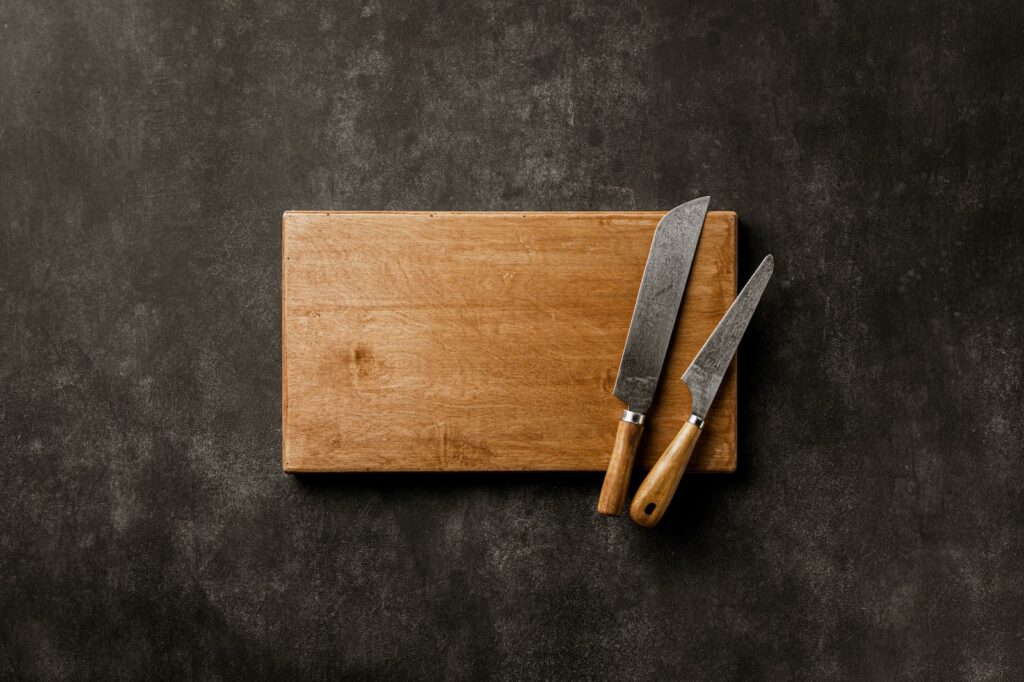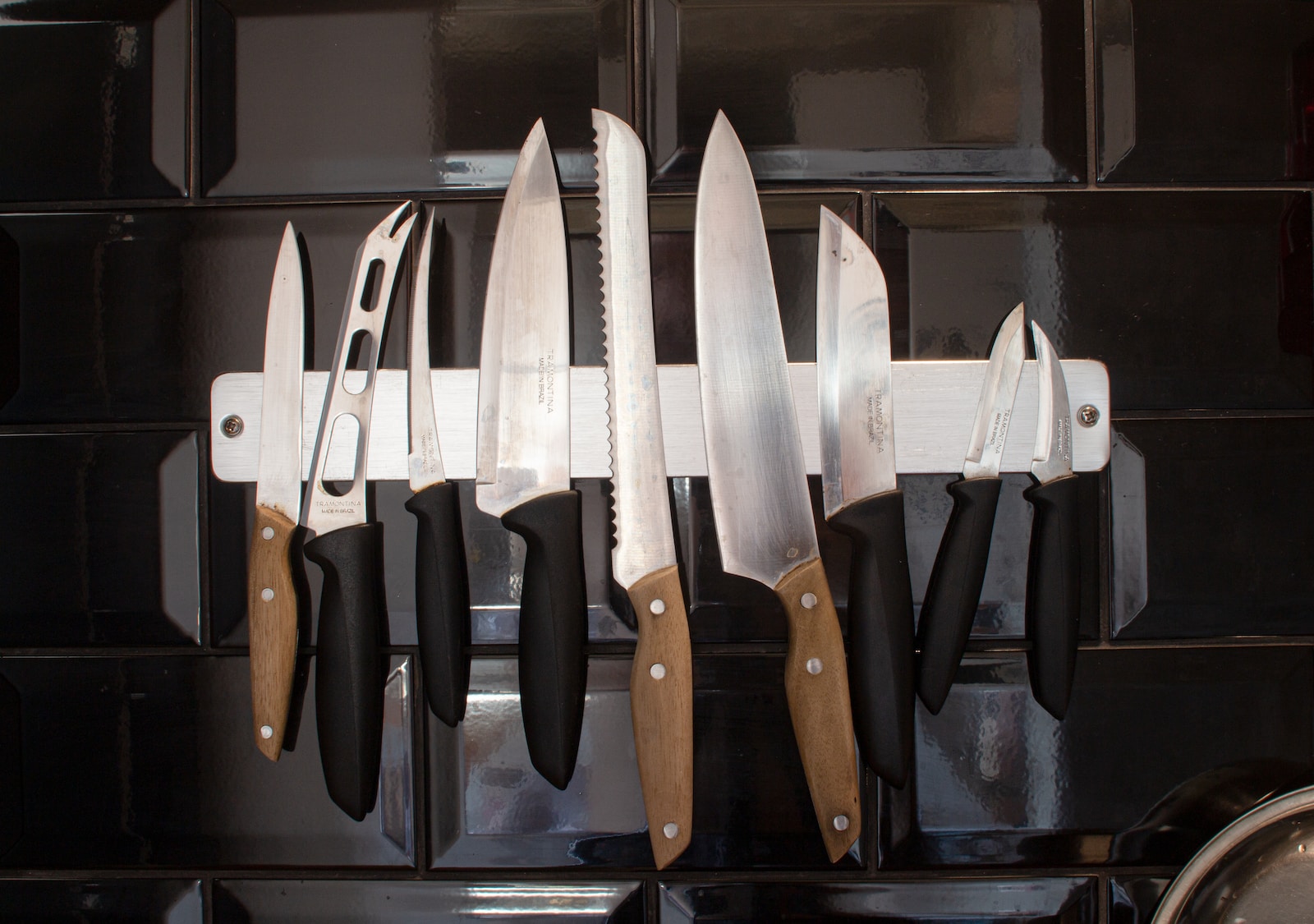Introduction
A dull kitchen knife is not only frustrating but also dangerous. You’re more likely to accidentally cut yourself when using a dull knife as it requires more force to cut through ingredients. On the other hand, a sharp knife effortlessly glides through food, making your cooking experience safer and more enjoyable. In this guide, we will explore the importance of sharpening your kitchen knife and provide you with step-by-step instructions on how to achieve a razor-sharp edge.
The Perils of a Dull Knife
Have you ever tried slicing a tomato with a dull knife? It can be quite challenging and often leads to squished tomatoes rather than neatly cut slices. Even worse, attempting to cut a tough watermelon or butternut squash with a dull knife can result in slips and potential injuries that may require stitches. The bottom line is, a sharp knife is a safe knife.
Sharpening vs. Honing: Understanding the Difference
Before we dive into the sharpening process, let’s clarify the distinction between sharpening and honing. Many people confuse these two terms, but they serve different purposes. Honing, often done with a honing steel, realigns the blade’s edge without removing any material. It straightens out bends and dings that occur with regular knife use, making the blade feel sharper. However, it doesn’t actually sharpen the blade. On the other hand, sharpening involves physically removing material from the blade to create a thinner and sharper edge.
Tabletop Sharpeners: Quick and Convenient
If you’re looking for a quick and convenient way to sharpen your knife, tabletop sharpeners are a popular choice. These handheld devices, also known as “V sharpeners” or “pull-through sharpeners,” are easy to use and require minimal equipment. They consist of two slits with abrasive materials of varying grits (coarseness) positioned in a ‘V’ shape.
To sharpen your knife using a tabletop sharpener:
- Hone the Knife: Before sharpening, it’s crucial to hone the knife with a honing steel to realign the blade’s edge.
- Position and Pull the Knife Through: Place the sharpener on a flat surface and grip the handle with your non-dominant hand. Firmly hold the knife in your dominant hand and insert the blade into the slit, starting from the base. Pull the knife through the slit towards yourself, ensuring the entire blade passes through for even sharpening.
- Repeat the Process: Repeat the sharpening process 3-4 times on the coarse grit and then 5-6 times on the finer grit.
- Wipe the Blade Clean: After sharpening, wipe the blade with a damp cloth and dry it thoroughly. You may notice black or gray residue on the towel, which is the metal particles removed during sharpening.
- Hone It Again: Finally, hone the blade once more to ensure optimal sharpness.
Although tabletop sharpeners are convenient, keep in mind that they remove more material with each sharpening compared to other methods. Consequently, frequent use may shorten your knife’s lifespan. However, if you’re an occasional user, this method should suffice without significantly affecting your knife’s durability.
Whetstones: Precision and Care
For avid home cooks or those with higher-quality knives requiring more precise care, whetstones provide an excellent sharpening solution. Whetstones, sometimes referred to as “wet stones,” come in different grits and can be used wet or dry. Using a whetstone requires practice and a steady hand.

Here’s how to sharpen your knife using a whetstone:
- Soak the Stone: Before sharpening, soak the whetstone in water until no air bubbles are visible. Overnight soaking is recommended, but 15 minutes may suffice.
- Hone the Knife: Just like with a tabletop sharpener, hone your knife to ensure proper alignment.
- Set Up Your Station: Place a dry towel under the whetstone to catch water splashes. Dry your hands and knife handle to prevent slipping. Set the whetstone on the towel, using a rubber base if available.
- Sharpen the First Side: Wet the surface of the stone and hold the knife at a 45-degree angle. Using your fingers to guide and stabilize the knife, pull the blade from the upper left corner of the stone to the bottom right corner. Repeat this motion 5-10 more times on one side.
- Sharpen the Second Side: Dry your hands and the knife handle to maintain a secure grip. Switch hands and repeat the sharpening process on the other side, ensuring an equal number of passes as the first side.
- Flip the Stone: Flip the whetstone to the finer grit side and repeat the sharpening process with the same number of passes on each side.
- Wipe the Blade Clean: Rinse the blade thoroughly and wipe it dry with a clean towel to remove any metal filings.
Maintaining a Sharp Knife
After sharpening your knife, it’s essential to maintain its sharpness for as long as possible. Follow these tips to protect your blade and extend its lifespan:
- Avoid Contact with Other Metals: Store your knife in a plastic sheath or a knife block to prevent contact with other metal utensils. Tossing your knife into a drawer or the sink can damage the edge.
- Never Put Your Knife in the Dishwasher: Dishwashers can cause serious damage to your knife’s blade. Always hand-wash and dry your knife immediately after use.
By adopting these practices, you’ll ensure that your razor-sharp knife stays in top condition, ready to tackle any culinary task.
Conclusion
Maintaining a sharp kitchen knife is essential for safe and efficient cooking. Whether you opt for a tabletop sharpener or a whetstone, regular sharpening will transform your dull blade into a precise cutting tool. Remember to hone your knife before sharpening and follow the appropriate techniques for each method. By investing time and care into sharpening and maintaining your knives, you’ll elevate your culinary experience and effortlessly glide through every ingredient with ease and precision.


